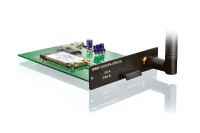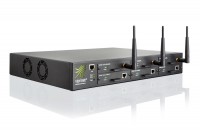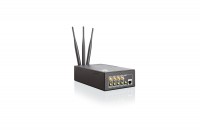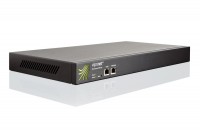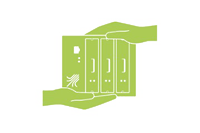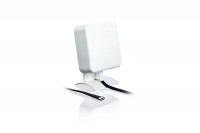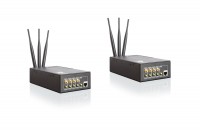Broadband Internet via DSL bonding
Viprinet couples ADSL 2+ Annex A & B, VDSL & SDSL
Viprinet offers Business Internet with the bonding of several DSL connections and other media like 3G / 4G.
Your benefits of DSL bonding:
- Low line prices instead of expensive leased lines or MPLS connections
- Low latency - the best medium for interactive applications and video streaming
- Maximum bandwidth with the unique Viprinet bonding
- High reliability by bonding different DSL providers and further WAN media
- Connection backup by additional bonding of cellular radio
- Several low-priced consumer lines become a professional site-to-site connection which costs less than leased lines or MPLS infrastructures
- Using the Viprinet VPN tunnel, the DSL connection becomes available via a static IP address

DSL bonding
DSL (Digital Subscriber Line) stands for several transfer protocols for bit-by-bit data transfer with high bandwidths. Generally, DSL utilizes already existing copper line infrastructures on the last mile, which are then concentrated on the DSLAM (Digital Subscriber Line Access Multiplexer). "Behind" the DSLAM, more effective infrastructures, e.g. fiber optics networks, are used.
The DSL characteristic concerning the applicability as business Internet connection or for site-to-site connections strongly depends on the version employed:
ADSL - Broadband DSL for end customers
ADSL is typically used for end-customer connections. The bandwidth is asymmetric, meaning up- and download differ severely from each other, generally at the ratio of 1:10. Current standard for ADSL is ADSL2+ with bandwidths of up to 20 Mbps (depending on annex and country). The possible bandwidth here depends on the length of the copper line, i.e. the distance between ADSL modem and ADSL DSLAM. Line latency (signal propagation time) is relatively low (generally 20-60 ms); however, stability and availability of ADSL are mediocre - too bad if it is to be used as single WAN connection for professional purposes. With ADSL, the copper line can be used for data transfer and telephony at the same time.
SDSL - DSL for professional usage
SDSL is a DSL variant that does not allow telephony and data traffic over one single access at the same time, but enables symmetric data transmission at a transfer rate of up to 2 Mbps. Without special precautions and SLAs, SDSL does not provide too much reliability: A typical availability of 98.5 per cent means SDSL users have to tolerate a line outage of up to five days a year.
SDSL enables a symmetric bandwidth of 2 Mbps (up- and download). SDSL also allows bonding several copper cores if more than one connection have been ordered from one provider.
VDSL - DSL enabling triple play
Triple play covers the transfer of video-on-demand offers, the provision of VoIP telephony and fast Internet access. Also allowing the utilization of copper lines, VDSL enables fairly high transfer rates of up to 50 Mbps. However, this technology requires rather short line lengths (less than 0.5 mi) between customer connection and DSLAM, which poses a slight problem for rural areas and smaller cities. At present, VDSL is generally offered as asymmetrical end customer product.
DSL is a good basic medium for being bonded to a virtual leased line
Low latency and relatively high bandwidth at low costs: DSL would actually be an excellent basic medium for professional Internet and site-to-site connection, if sending and receiving weren't so asymmetrical. Symmetrical DSL offers in turn only provide enough bandwidth when bonded and thus everything but economically priced. Neither option allows for sufficient reliability.
Due to the ability to bond different WAN media, Viprinet offers ideal conditions to utilize the DSL advantages for professional usage without having to put up with the disadvantages. For the connection of ADSL2+ Annex A/B and VDSL2 links, we tender native Hot Plug Modems. SDSL may be connected via the Viprinet Gigabit Ethernet Hot Plug Module.

